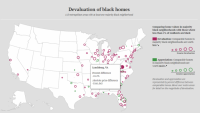The Brookings Institution is offering content for teachers and students on economics, social policy, politics, government, and international relations. Please feel free to download, link, embed, print, or use these materials however works best for your educational needs. For questions or to ask a Brookings expert to speak to your class, please send an email to [email protected].
Economics
The Federal budget
The federal debt is higher than at any time since World War II and continues to climb. Play the Fiscal Ship game to learn about the federal budget and put it on a sustainable course. We’ve put together this Fiscal Ship teaching guide to go with the game.
For more materials on tax and spending, see:
- How worried should you be about the federal deficit and debt?
- Who are the rich and how might we tax them more?
- What are capital gains taxes and how could they be reformed?
Shapes of the post-COVID-19 economic recovery
An alphabet soup describes how economic recovery following the coronavirus pandemic could play out: L-, V-, W-, or Z-shaped, or even a “Nike swoosh.” What do these mean? David Wessel explains the scenarios and their likelihood in this short video.
Primers on economic policy
The Hutchins Center produces concise explainers of economic concepts in the news. Examples include:
- How does unemployment insurance work? And how is it changing during the coronavirus pandemic?
- Where is the US government getting all the money it’s spending in the coronavirus crisis?
- Five facts about student loans
- The debt limit
Check out all the explainers from the Hutchins Center.
Understanding the Federal Reserve
The Federal Reserve system has a “dual mandate” to target maximum employment and to control inflation. Janet L. Yellen, chair of the Federal Reserve Board from 2014-2018, discussed the “inflation puzzle” and employment.

See also:
- Explaining the Phillips Curve
- A discussion on how Congress governs the Federal Reserve
- A review of the Fed’s monetary policy strategy
America’s changing demographics
New racial demographics are remaking America. Demographer WIlliam H. Frey shows the U.S. is becoming a more multiracial country. What does this diversity mean for the future? Watch the video to learn the basics about the demographics of race in America.
For more materials on demographics, check out these up-to-date analyses:
- Six maps that reveal America’s expanding racial diversity
- Now, more than half of Americans are millennials or younger
- The nation is diversifying even faster than predicted, according to new census data
- Reducing immigration will not stop America’s rising diversity, Census projections show
- How many undocumented immigrants are in the United States and who are they?
Social mobility and income inequality
In this engaging and unique video, Richard Reeves uses LEGO blocks to illustrate how inequality affects the American Dream, revealing dismal prospects for underprivileged Americans to move up the socio-economic ladder.
In another video using LEGO blocks, David Wessel explains whether changes in the U.S. tax code can alter income inequality in America.
In America, the 1 percent are the villains. Everyone else—the 99 percent—are the good guys, right? Not so, argues Richard Reeves in his book Dream Hoarders: How the American Upper Middle Class Is Leaving Everyone Else in the Dust, Why That Is a Problem, and What to Do About It. The real class divide, he says, is not between the upper class and everyone else; it is between the upper middle class and everyone else. To illustrate his argument, Brookings created a short, interactive game to help you determine whether or not you are hoarding the American dream.

When considering proposals to raise taxes on the wealthiest Americans to reduce inequality, fund programs benefiting lower income households, and mitigate the amount of dynastic wealth in the U.S., how should we differentiate wealth-off Americans from the really rich? What would federal policies – like a wealth tax – could be implemented? And what negative consequences do critics believe these policies entail? David Wessel explains:
Race and discrimination in America
Housing is just one area where Black Americans suffer from discriminatory public policies. Throughout the United States, homes in Black neighborhoods are priced around 23 percent less than those in white neighborhoods, a difference of nearly $50,000 per home which totals to about $156 billion in lost assets. In this video, Andre Perry, author of Know Your Price: Valuing Black Lives and Property in America’s Black Cities, explains how there is nothing wrong with Black people that ending racism can’t solve, and why we must work to overcome inequalities by countering the policy-based devaluation of the Black community.

Homeownership is central to achieving the American Dream, yet racist federal housing policy (redlining) shut out too many Black Americans from the chance to buy homes and build wealth.In this report and interactive infographic, Brookings researchers examine the true cost of racial bias. The interactive component compares home values in majority Black neighborhoods in 113 metropolitan areas with at least one Black majority neighborhood.

Today, the average white family has about 10 times the wealth as the average Black family. White college graduates have more than 7 times more wealth than Black college graduates. No wonder the American Dream seems out of reach for so many Black Americans. In their essay, Rashawn Ray and Andre Perry argue that the U.S. government should pay reparations restore the wealth deferred to Black citizens due to slavery and racial policies designed to deny wealth-building opportunities.
Also, watch this discussion between professor William Darity and writer Kirsten Mullen on reparations for Black Americans.
Politics and GovernANCE
Brookings’ Elaine Kamarck unpacks the origin and causes of gerrymandering and explains how states can reform the process for better results.
 Molly Reynolds explains the history of the Senate filibuster and the possible, but politically unlikely, ways to reform or eliminate it.
Molly Reynolds explains the history of the Senate filibuster and the possible, but politically unlikely, ways to reform or eliminate it.
“Socialism” is a frequent invective hurled by conservative politicians against opponents on the left, and most Americans continue to oppose socialism in the abstract. But what is socialism, what does “democratic socialism” mean, and what are the political implications? Brookings scholars E.J. Dionne, Jr. and William Galston explain it all in this primer.
 Darrell West discusses the history of the Electoral College and argues why the time has come to abolish it.
Darrell West discusses the history of the Electoral College and argues why the time has come to abolish it.
The U.S. Supreme Court has had nine justices since the mid-19th century, and they can serve for life. Russell Wheeler explores whether the size of the court and the tenure of its members should be changed.
If you were president of the United States, how would you approach the climate change crisis? How would you balance often competing goals of keeping the public on your side (so you could get reelected), maintaining economic growth, and reducing long-term emissions? Play “A president’s climate quandary” to find out.
- Also, read Samantha Gross’s essay on why fossil fuels are so hard to quit.
- And, more from Samantha Gross about some of the key political issues in the climate change debate.
- And, read Samantha Gross’s idea for how to transition away from fossil fuelse in a politically viable way.
- Finally, Adele Morris and colleagues have explored the risk of financial collapse in America’s coal-reliant communities in a world of declining coal use.
 Brookings and Washington University in St. Louis developed an interactive tool that lets users select parameters and run a simulation to provide insight into how policies that use testing and contact tracing might help contain the coronavirus pandemic.
Brookings and Washington University in St. Louis developed an interactive tool that lets users select parameters and run a simulation to provide insight into how policies that use testing and contact tracing might help contain the coronavirus pandemic.
International Relations
Russia
 Angela Stent explains the current state of the U.S-Russia relationship and why it’s important for the two countries to find balance between cooperation and competition.
Angela Stent explains the current state of the U.S-Russia relationship and why it’s important for the two countries to find balance between cooperation and competition.
Listen to this podcast with former Brookings scholar Alina Polyakova on Russia’s acts of political interference in the U.S. and European countries, and how they can fight back.
China

Ryan Hass unpacks what led China to become a more prominent political issue in the U.S. and the likelihood it drives the national conversation in 2020.
Ryan Hass goes deeper into the history of the U.S.-China relationship, where it stands today, and what steps the U.S. can take to protect its interests in the relationship going forward.
Foreign aid
 Opinion polls consistently report that Americans believe that U.S. foreign aid represents about a quarter of federal government spending. But, it’s less than 1%. George Ingram discusses foreign aid—what it is, what percentage of the federal budget it makes up, its efficiency, and who supports it.
Opinion polls consistently report that Americans believe that U.S. foreign aid represents about a quarter of federal government spending. But, it’s less than 1%. George Ingram discusses foreign aid—what it is, what percentage of the federal budget it makes up, its efficiency, and who supports it.
Liz Schrayer explains the storyline of U.S. foreign assistance, from the Marshall Plan following World War II to the current era.
Defense and alliances

Experts—and everyone else—disagree on whether the United States spends too much or too little on the defense budget. Yes, the United States spends more on defense than many other nations combined, but is this the right metric? Michael O’Hanlon explains why context rather than size helps us make sense of the defense budget.
- Also, see O’Hanlon and James Miller’s argument for focusing on the quality of the armed forces instead of the size of the defense budget.
Lindsey Ford and James Goldgeier provide important background on how America’s alliances were formed and what the United States gains from those relationships.
Explore the Trans-Atlantic Scorecard, a quarterly evaluation of U.S.-European relations across political, security, and economic dimensions. The Scorecard also offers a timeline of significant moments over the previous three months.


Commentary
Online resources from the Brookings Institution for teachers and students
August 12, 2020